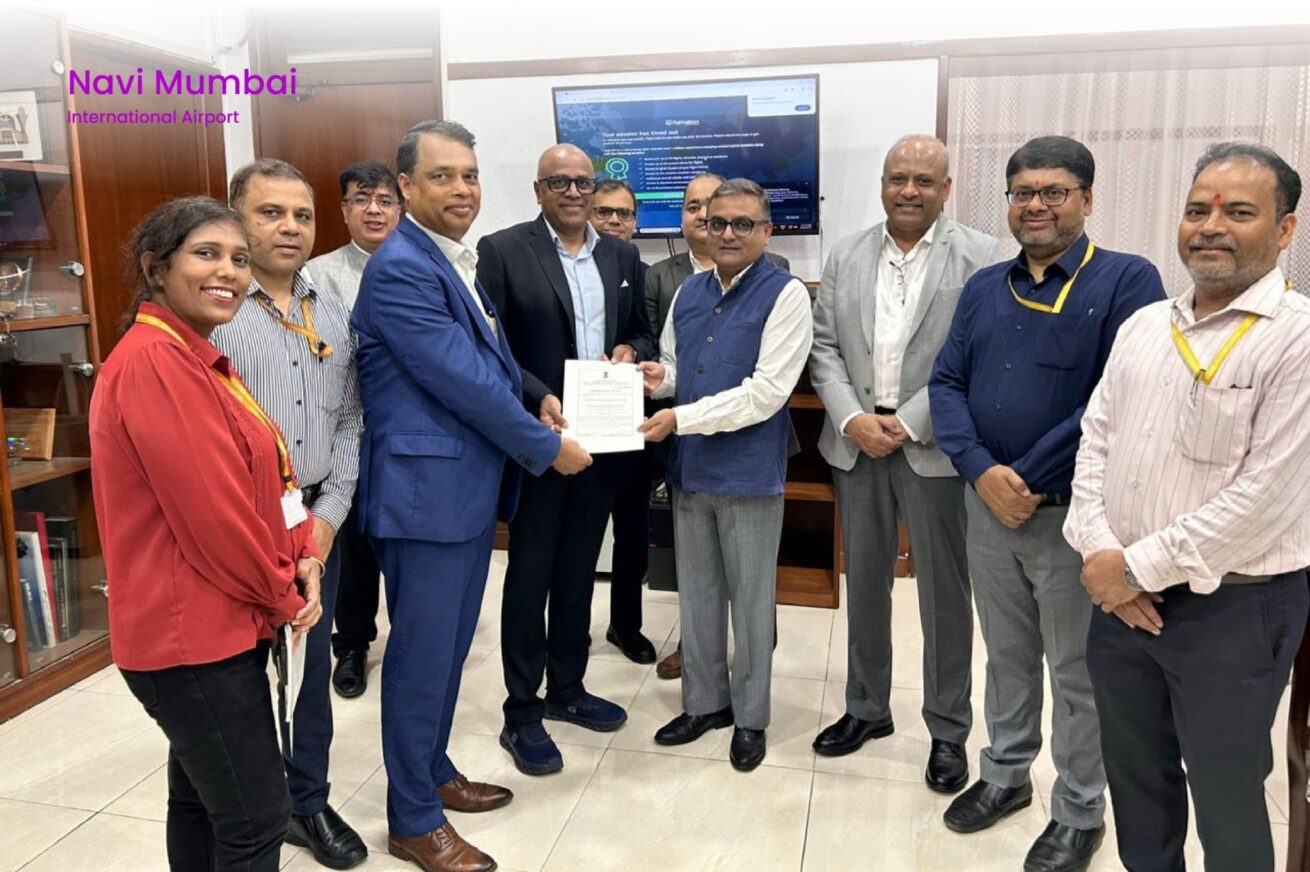India’s aviation landscape is soaring to new heights with the latest milestone achieved by the Navi Mumbai International Airport (NMIA). On 30 September 2025, the Directorate General of Civil Aviation (DGCA) officially granted NMIA its aerodrome licence, a critical regulatory green light that certifies the airport’s readiness for commercial operations. This development sets the stage for its much-anticipated inauguration, expected to be led by Prime Minister Narendra Modi later this month.
But what does this licence really mean, and why is it such a big deal?
What Is an Aerodrome Licence?
An aerodrome licence is essentially the aviation world’s stamp of approval. Issued under Rule 78 of the Aircraft Rules, 1937, it confirms that an airport meets all safety, infrastructure, and operational standards required to handle aircraft movements. It’s not just about runways and terminals. It covers everything from obstacle clearance and airspace management to firefighting capabilities and air traffic control systems.
In NMIA’s case, the DGCA and Airports Authority of India (AAI) conducted rigorous inspections earlier this year. They identified nearly 200 obstacles including tall buildings, trees, mobile towers, and even terrain features that had to be mitigated before the licence could be issued. This meticulous process ensures that aircraft can safely take off, land, and manoeuvre without risk.
A Strategic Leap for Mumbai’s Aviation Ecosystem
Mumbai’s current airport, Chhatrapati Shivaji Maharaj International Airport (CSMIA), is one of the busiest in Asia, handling over 50 million passengers annually. However, it is landlocked and has limited room for expansion. NMIA, located in Navi Mumbai, is designed to complement and eventually share the load with CSMIA.
Once fully operational, NMIA is expected to handle up to 60 million passengers per year, nearly matching Heathrow Airport in London, which saw around 62 million passengers in 2022. That’s a massive boost for India’s aviation capacity.
Aviation Facts That Make NMIA Stand Out
- Runway Design: NMIA will feature two parallel runways, allowing simultaneous take-offs and landings. This is a feature seen in major international hubs like Frankfurt and Atlanta.
- Automated Cargo Terminal: It will be India’s first fully automated cargo terminal, streamlining logistics and reducing turnaround times for freight carriers.
- Farm-to-Flight Corridors: These will enable direct export of perishables from farms to aircraft, reducing spoilage and boosting agri-export efficiency.
- Aircraft Parking: The airport will have over 100 aircraft stands, including Code F stands capable of handling wide-body aircraft like the Boeing 777 and Airbus A350.
Airlines Ready for Take-Off
IndiGo, Akasa Air, and Air India Express are among the first carriers expected to launch operations from NMIA. These airlines will connect Navi Mumbai to key domestic destinations such as Delhi, Bengaluru, Hyderabad, and Chennai, with international routes likely to follow in subsequent phases.
A Gateway to the Future
NMIA is not just another airport. It is a symbol of India’s aviation ambitions. With passenger traffic in India projected to reach 1.3 billion by 2040, infrastructure like NMIA is essential to meet demand. It also supports the UDAN scheme’s goal of enhancing regional connectivity and making air travel accessible to more Indians.
Final Approach
The aerodrome licence is more than a bureaucratic checkbox. It is the final approach before take-off. As NMIA prepares to welcome its first flights, it promises to redefine air travel for millions and serve as a model for future airport developments across the country.
Whether you’re an aviation geek tracking ICAO codes or a traveller dreaming of shorter queues and smoother journeys, Navi Mumbai International Airport is a story worth watching and flying through.


